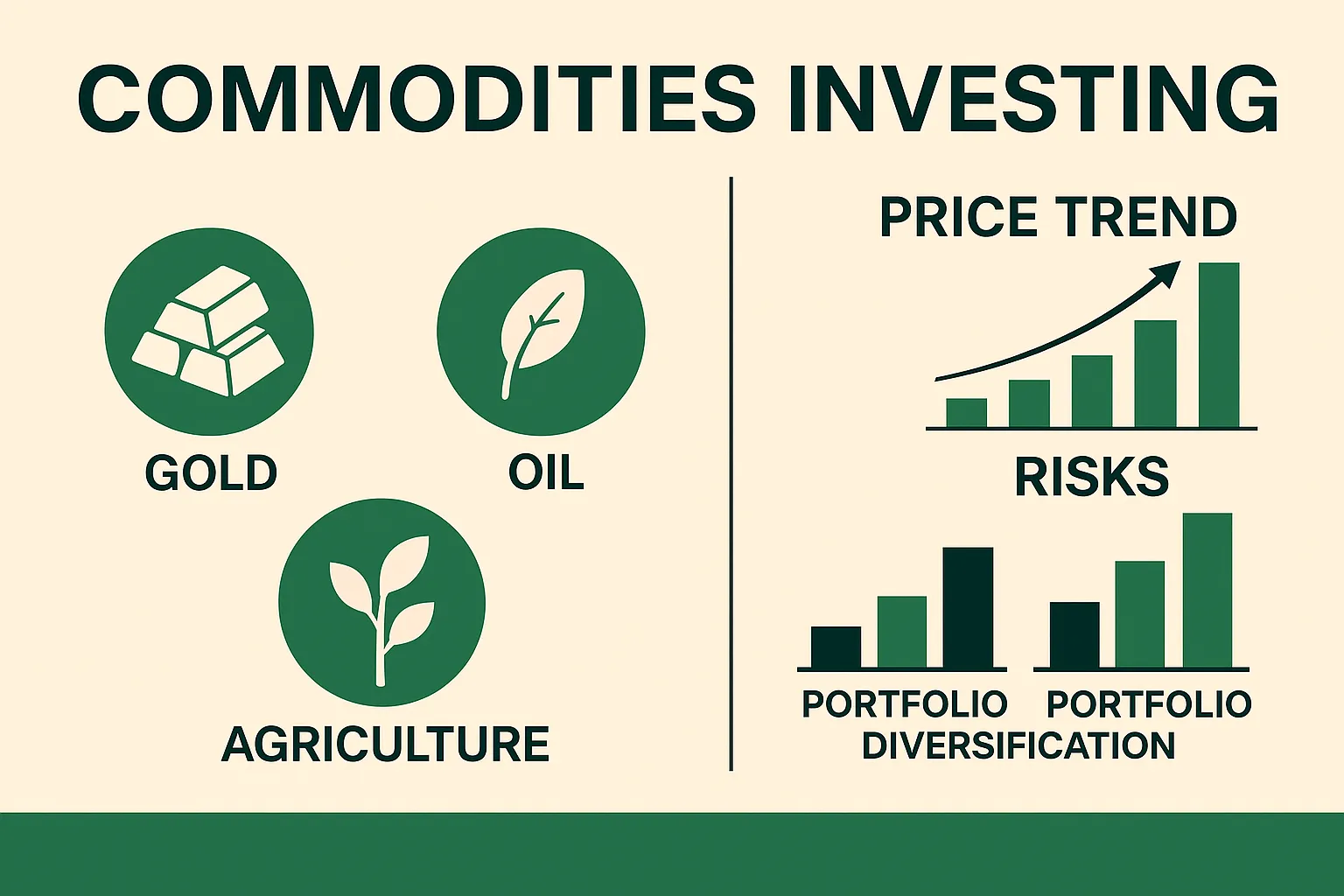 BrokerHiveX
BrokerHiveX BrokerHiveX
BrokerHiveX BrokerHiveX
BrokerHiveXSummary:How is commodity investing? Are gold, oil, and agricultural products suitable for the average investor? This article systematically analyzes global market trends, investment methods, risk profiles, and comparative analysis to offer a comprehensive analysis of commodity investment strategies and risk management recommendations for both institutional and individual investors. It's suitable for both beginner and advanced investors in 2025.

Commodities refer to natural resources or primary products that can be traded in a standardized manner. They are mainly divided into three categories:
Precious metals : gold, silver, platinum, etc.
Energy : crude oil, natural gas.
Agricultural products : soybeans, corn, wheat, coffee, etc.
👉 Commodities are considered an important part of asset allocation because of their inflation hedging and safe-haven properties.
Physical investment : purchasing physical gold and silver, but there are storage and liquidity issues.
Futures contracts : The most common commodity investment method, suitable for professional investors, with higher risks and leverage.
ETFs and funds : such as SPDR Gold Shares and United States Oil Fund (USO), are suitable for ordinary investors.
Indirect equity investment : Gain indirect exposure by investing in mining companies, energy companies, and agricultural enterprises.
| category | Investment Logic | Price influencing factors | Risk characteristics |
|---|---|---|---|
| gold | Safe-haven assets, anti-inflation | US dollar interest rates, inflation rates, and geopolitics | Low volatility and long-term stability |
| oil | Global Energy Core | OPEC policy, supply and demand, and geopolitical conflicts | High volatility and susceptible to black swan events |
| agricultural products | Essential consumer goods | Weather, climate, global demand | Strong cyclicality and great policy impact |
Gold is more suitable for long-term allocation, oil is suitable for short-term trading, and agricultural products are suitable for trend investment.
Gold : Maintaining the range of USD 1,600-2,400 per ounce from 2020 to 2025, and around USD 2,300 in August 2025.
Crude oil : The epidemic in 2020 caused the price to fall to negative (-37 US dollars per barrel), the Russia-Ukraine conflict in 2022 pushed it to 120 US dollars per barrel , and maintained at 75-90 US dollars in 2025.
Agricultural products : Global climate drought pushed up wheat prices by more than 40% in 2021, and prices will remain volatile in 2025 due to the impact of El Niño.
Compared with stocks, bonds, and cryptocurrencies:
Stocks : Affected by corporate profits, the returns are more long-term.
Bonds : stable cash flow, low risk.
Cryptocurrency : High volatility and great risk.
Commodities : Prices are highly correlated with the macroeconomy and high-risk events, and are a "hedging tool" in asset allocation.
Control ratio : configure the ratio to 5%-15% to avoid excessive concentration.
Diversified investment : gold + oil + agricultural products to diversify risks.
Compliant channels : Participate through regulated ETFs, funds or licensed exchanges.
Macro tracking : Pay close attention to inflation, geopolitics, and climate factors.
Long term vs short term : Gold is suitable for long-term holding, while oil and agricultural products are more suitable for medium- to short-term trading.
Commodity investments are a key component of global asset allocation , providing stability and hedging against uncertainties such as inflation and geopolitical conflict. Gold is suitable for long-term investment, while oil and agricultural products are more speculative and cyclical. In their asset allocations for 2025, investors should consider commodities as a complement to stocks and bonds to achieve a portfolio that balances stability and risk resilience.
BrokerHivex is a financial media platform that displays information sourced from the public internet or uploaded by users. BrokerHivex does not endorse any trading platform or instrument. We are not responsible for any trading disputes or losses arising from the use of this information. Please note that the information displayed on the platform may be delayed, and users should independently verify its accuracy.